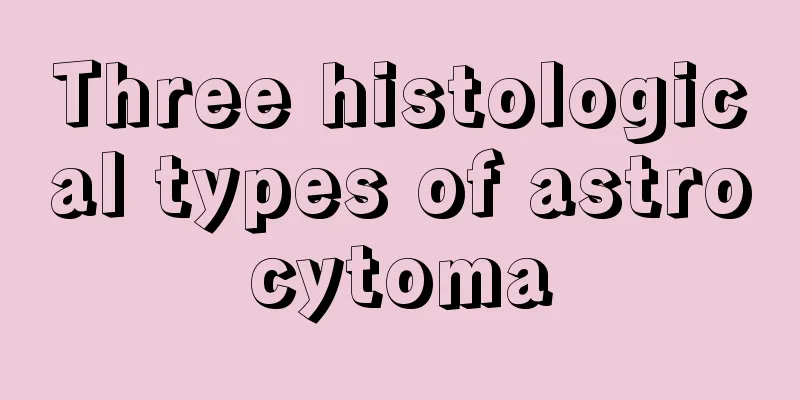Three histological types of astrocytoma

|
Astrocytomas are tumors composed of astrocytes. They are relatively common central brain tumors that can grow anywhere in the brain or spinal cord. Most adult astrocytomas grow in the cerebrum, while pediatric astrocytomas often grow in the cerebellum and brainstem. Astrocytomas can be divided into three subtypes histologically. 1. Fibrous type: This is the most common type and can be found in almost any part of the central nervous system, but it is mostly concentrated in the cerebral hemispheres in adults and more common in the cerebellum, brainstem and thalamus in children and adolescents. This type of fibrous brain tumor is very hard, sometimes a little elastic like rubber, with abundant blood vessels in the tumor tissue, and no proliferation of vascular endothelial cells. The interstitium may be calcified, and the adjacent cerebral cortex may be infiltrated by the tumor and become dark gray. Cysts of different sizes and shapes may form in the center of the tumor. 2. Obese cell type: This type is relatively rare, accounting for about 25% of astrocytomas. It is usually found in the cerebral hemispheres and also in the septum pellucida. The tumor grows in an infiltrative manner and grows rapidly. Small cysts may form on the surface of the tumor and the texture is soft. Obese cells observed under a microscope are enlarged, spherical or polygonal, with uniform and transparent cytoplasm and short and thick protrusions. The nucleus of the tumor is very small, the nucleolus is not obvious, the nuclear division is rare, and the cytoplasm is foamy and abundant. 3. Protoplasmic type: This is the rarest type, usually located in the temporal lobe of the brain. The invasion site of protoplasmic cancer is relatively superficial, mainly in the cerebral cortex, and the distance between the affected gyri widens and becomes flat. When it is a little more serious, the cancer can invade the white matter and develop deeply in an infiltrative manner, forming cystic tissues of varying sizes, numbers and shapes. The hemisection of the tumor is generally translucent and uniformly jelly-like. |
<<: TCM Syndrome Differentiation and Treatment of Gallbladder Cancer
>>: Patients with ovarian cancer and diabetes should control blood sugar before surgery
Recommend
Mid-term treatment and conditioning methods for liver tumors
In order to improve the temporary survival rate o...
Can coix seed be eaten with walnuts?
Nowadays people often like to eat foods rich in c...
Will frequent nose picking cause rhinitis?
Colds and fevers are common diseases among people...
Who can't eat water chestnuts
Water chestnuts are a delicious food and are ofte...
What are the classifications of hypertension?
Hypertension is a chronic disease of the human bo...
What are the symptoms of pituitary tumor disease in adults
Pituitary tumors mostly occur in young and middle...
How to get rid of mosquito poop the fastest
Mosquito droppings are also called freckles. This...
What should I do if my face is dry, itchy and flaky
The face is like people's facade. The quality...
What to do if you have a dental cyst? Radical treatment of dental cyst
At present, more and more people have problems wi...
What to eat after interventional treatment of pancreatic cancer
The diet of pancreatic cancer patients is also pa...
How to reduce high blood pressure effectively?
The problem of high blood pressure is something w...
Four major causes of cerebral arteriosclerosis
Cerebral arteriosclerosis is a disease that is co...
What are the sequelae of rectal cancer
It is said that rectal cancer is a malignant tumo...
Pain in the front thigh muscles
People will occasionally feel pain in the muscles...
Nervous and fast heart rate
We all know that the human heart is a particularl...









